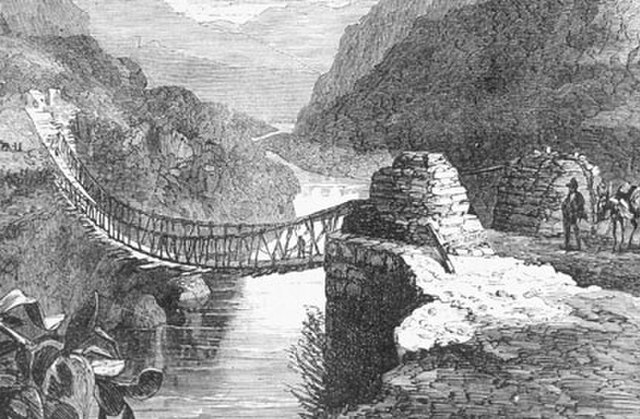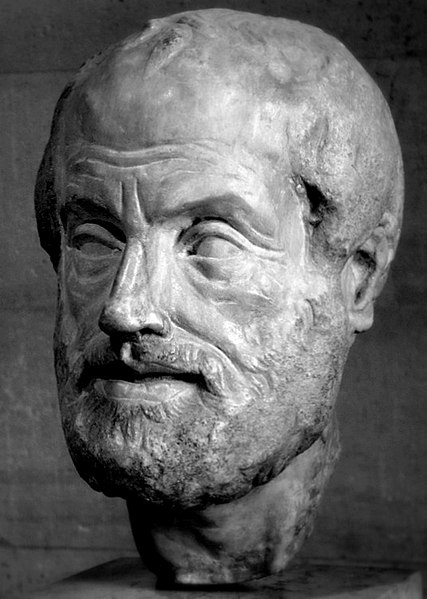In continuum mechanics, stress is a physical quantity that describes forces present during deformation. For example, an object being pulled apart, such as a stretched elastic band, is subject to tensile stress and may undergo elongation. An object being pushed together, such as a crumpled sponge, is subject to compressive stress and may undergo shortening. The greater the force and the smaller the cross-sectional area of the body on which it acts, the greater the stress. Stress has dimension of force per area, with SI units of newtons per square meter (N/m2) or pascal (Pa).
Residual stresses inside a plastic protractor are revealed by the polarized light.
Roman-era bridge in Switzerland. The stone arches in the bridge are subject to compressive stresses.
Inca bridge on the Apurimac River. The rope in the bridge is subject to tensile stresses.
Glass vase with the craquelé effect. The cracks are the result of brief but intense stress created when the semi-molten piece is briefly dipped in water.
In physics, a force is an influence that can cause an object to change its velocity, i.e., to accelerate, meaning a change in speed or direction, unless counterbalanced by other forces. The concept of force makes the everyday notion of pushing or pulling mathematically precise. Because the magnitude and direction of a force are both important, force is a vector quantity. The SI unit of force is the newton (N), and force is often represented by the symbol F.
Aristotle famously described a force as anything that causes an object to undergo "unnatural motion"
Sir Isaac Newton in 1689. His Principia presented his three laws of motion in geometrical language, whereas modern physics uses differential calculus and vectors.
Galileo Galilei was the first to point out the inherent contradictions contained in Aristotle's description of forces.
Images of a freely falling basketball taken with a stroboscope at 20 flashes per second. The distance units on the right are multiples of about 12 millimeters. The basketball starts at rest. At the time of the first flash (distance zero) it is released, after which the number of units fallen is equal to the square of the number of flashes.








